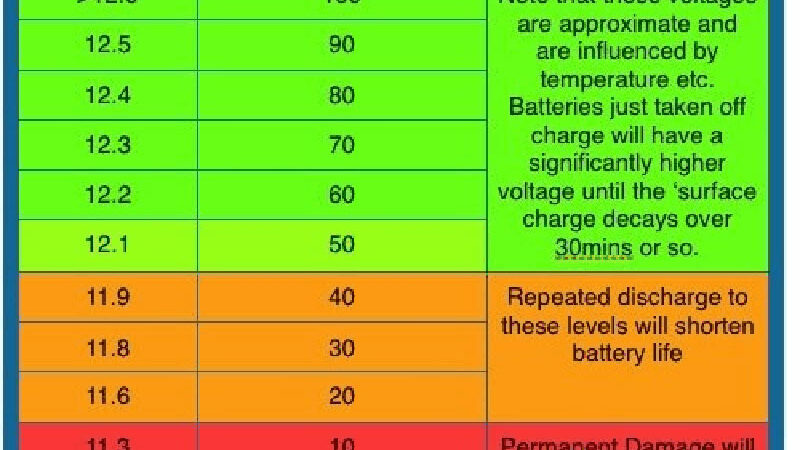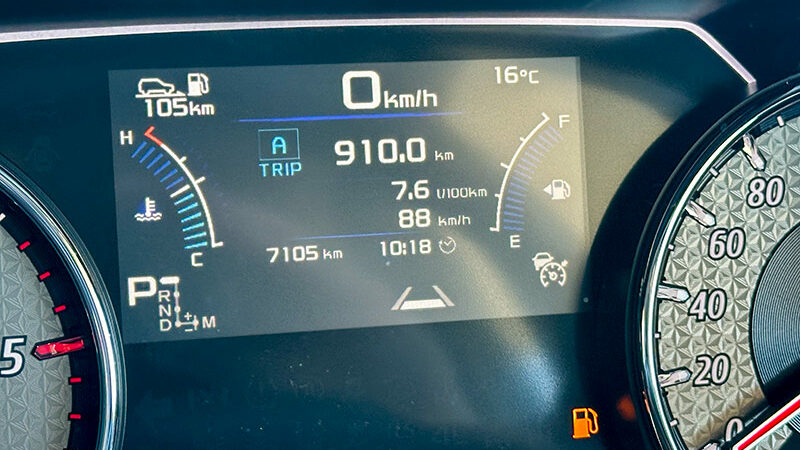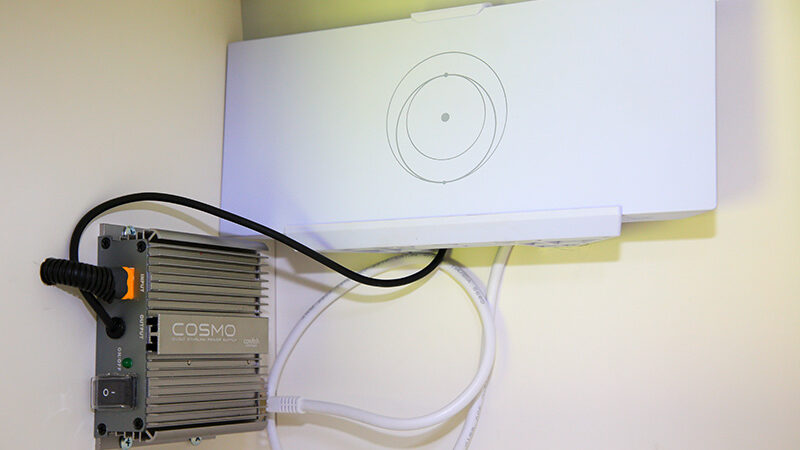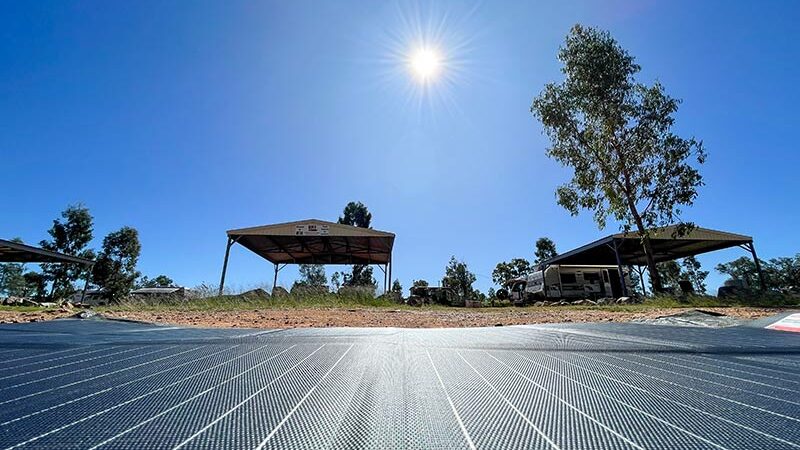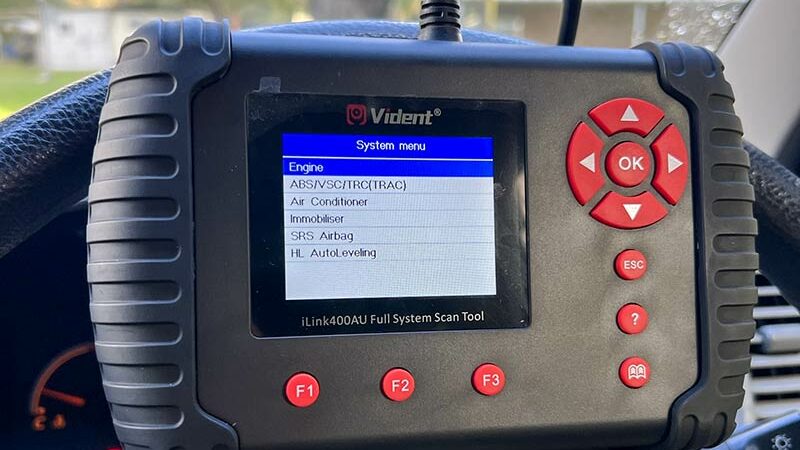No Sun? Recharge Your Solar Generator Anyway!
I’ve been advocating for portable lithium power stations, or solar generators as they are also known, for some time now. I’ve been using various models of solar generator out in the field for more than two years and, even in that short period, the technology has advanced tremendously. So much so that the capabilities of the latest models from companies like EcoFlow and Bluetti are astonishing, to say the least.
But while they offer significant advantages over their petrol-driven cousins, if they go flat, you can’t just ‘fill them up’ and get them going again. They need to be recharged. Fortunately, that need not be as daunting as it may seem. They can be recharged in a multitude of ways, some very quickly indeed.

In this tech special, we look at the various ways you can recharge your portable lithium power station, how long it will take to recharge, and the ways you can boost charging so you can be back up and running in no time at all.
SOLAR PANELS FOR YOUR GENERATOR
It might seem obvious to talk about solar panels as an option for recharging solar generators but it is surprising how much confusion there is out there about it. For instance, all solar generators will have a maximum solar input rating in watts. As it turns out, you can connect higher-wattage panels quite safely as long as they do not exceed the generator’s maximum solar voltage input. This is called ‘over panelling’ and it’s a safe way to improve solar recharging.
For example, let’s have a look at the EcoFlow Delta 2 we reviewed back in February. It has a solar input rating of 500W at a maximum voltage of 60V. Nothing is stopping you from connecting two 300W panels in parallel to the Delta 2 for a total of 600W as long as the voltage of the panels does not exceed 60V. These two panels will produce 500W with less sunlight due to their combined larger surface area. They will hit the solar generator’s maximum wattage earlier and hold that level later in the day.
TWELVE-VOLT CAR OUTLET
All solar generators will likely be supplied with a 12V charging cable that plugs into your vehicle’s standard cigarette lighter outlet. They are a very convenient, plug-and-play charging solution but they are extremely slow, with most being limited to no more than 110W. This is due to the limitations of these plugs – most are rated to a maximum of 10A. If they charged at a higher wattage, there would be a risk of melting plugs and wiring.
These charging cables are ideal for small-capacity solar generators up to around 400Wh (watt hours). Any larger and you could be driving all day and not fully recharge your unit.
DIRECT ALTERNATOR CONNECTION
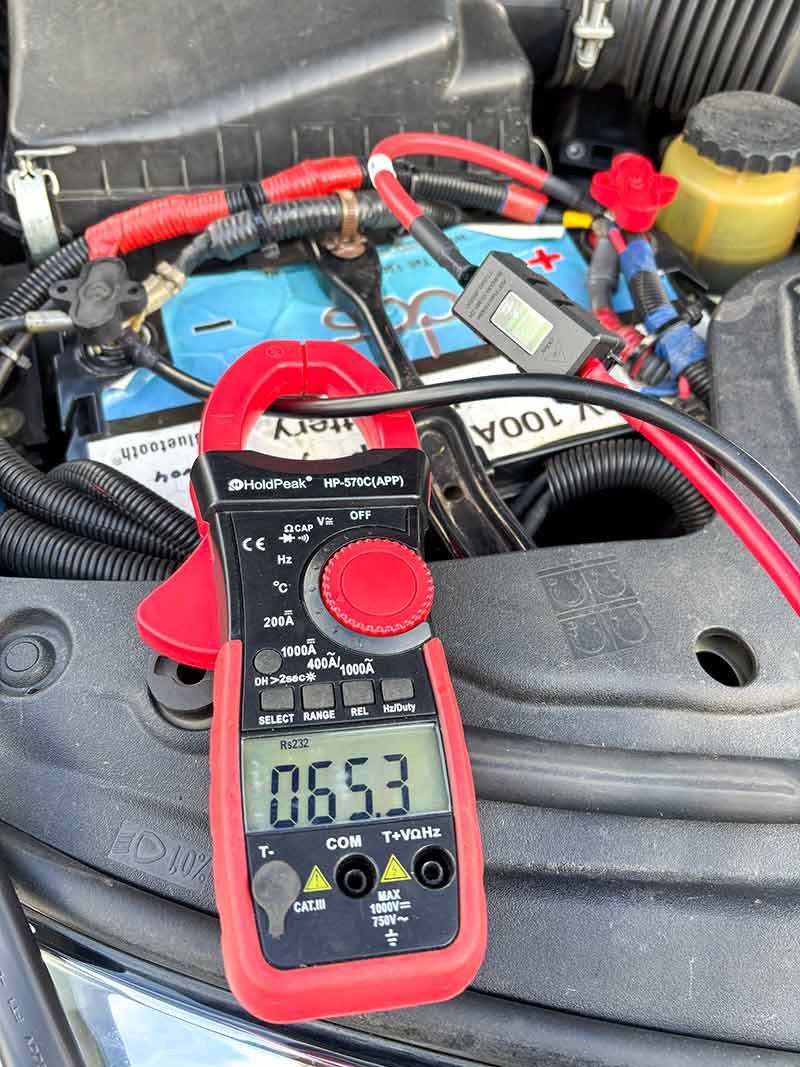
One way to easily get around the 12V charge limit is to bypass the cigarette lighter plug and connect the solar generator directly to your vehicle’s alternator output via the battery. Depending on your vehicle’s alternator output voltage and the quality of the cabling, you can almost double the charge rate to around 180W. While still not super-fast, it could recharge a 600-1000Wh solar generator throughout a day’s drive.
Handy tip. If you have an Anderson connection on your vehicle for charging your caravan’s batteries, you can plug your solar generator into this and charge it from there.
DC-DC STEP-UP CONVERTER
You’re probably familiar with DC-DC chargers. DC-DC converters are slightly different in that they are designed to deliver a constant output voltage, rather than a variable output required for battery charging. While they are not very good for recharging regular batteries, they turn out to be ideal for recharging solar generators. They work by simulating a solar panel connected to the solar generator’s internal MPPT solar controller.
There are several available on the market but the most popular unit used for this application is the Victron Orion 12/24-20 converter. When connected to your vehicle’s alternator, it will step-up the input voltage to around 28V. Most solar generators can accept a DC input of up to 60V so this is well within their limits.
At this voltage, you can expect charge rates of around 400W. At that rate, you could fully recharge a 1000Wh solar generator from near flat in less than three hours, or a large 2000Wh generator in a day’s drive.
Be careful when choosing this option, especially if you intend to fit it yourself. At 400W, the Victron Orion will pull around 30A from your car’s electrical system. That is a fair amount and will require good-quality cabling and connections to work properly. Also, these converters have no automation built into them. If you leave it switched on when the engine is turned off, it will drain your car’s battery in as little as a couple of hours. The Victron Orion does have the option of fitting a remote switch, however, which will protect your battery as long as you remember to turn it off.
PETROL GENERATORS
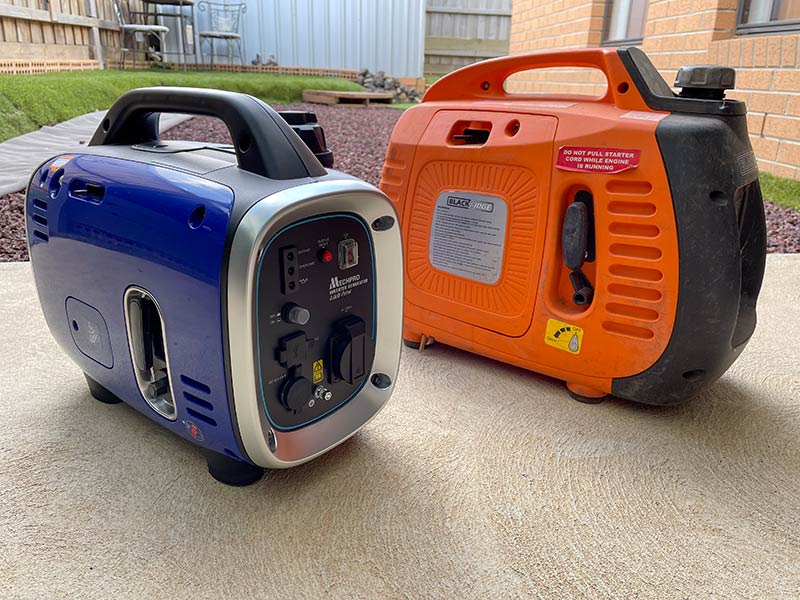
While most owners of solar generators will use them to replace petrol generators, for some who rely on one as their sole source of off-grid power, carrying a petrol generator as a back-up charging solution is a good idea. You don’t necessarily have to carry a large generator even to recharge a high-capacity solar generator. Most can vary the AC charge rate. For example, the EcoFlow Delta Series can vary its charge rate from 200W up to its maximum in increments of 100W. This means a small 800W generator will suffice.
INVERTERS
Most caravans and many 4WDs are nowadays fitted with an inverter. These convert a 12V power source to 240V mains output. As with petrol generators, they are available in a range of output levels, so it pays to check that your solar generator can adjust its 240V charge rate to suit your particular inverter.
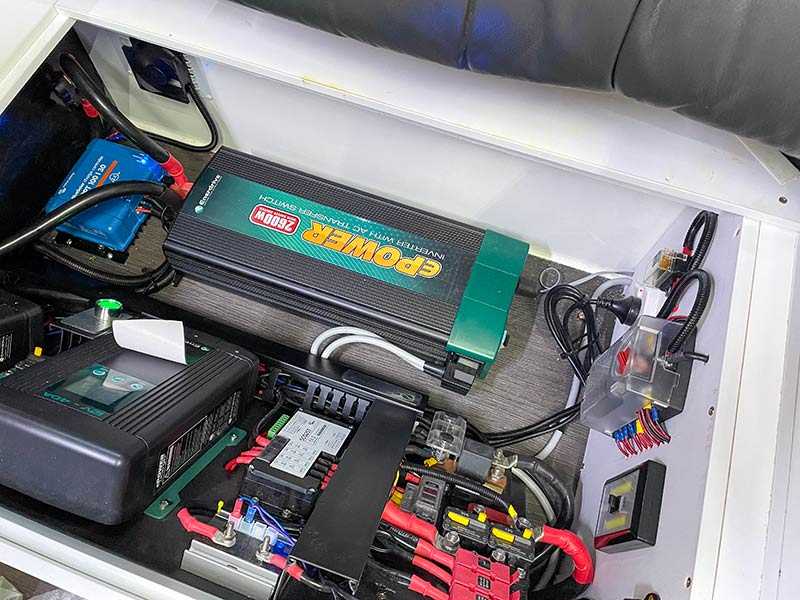
If you have an inverter in your caravan that is integrated into a high-quality 12V system with solar charging, you can use excess solar power to recharge your solar generator through the inverter.
Be aware that most solar generators require pure sine wave power input to work. Many new 4WDs may have a 240V outlet in the back. Do not use these are they are not pure sine wave. They are normally limited to 120W, so they wouldn’t be much use for a larger solar generator anyway.
POWER TOOL BATTERIES
A mate of mine has a small business (Slade International) making custom devices to fit the most popular power tool batteries. We considered the idea of using these batteries to partially recharge a solar generator. This may seem futile but consider that a Ryobi 18V 5Ah battery holds 90W hours of charge. That’s enough power to run a small car fridge for two to three hours.
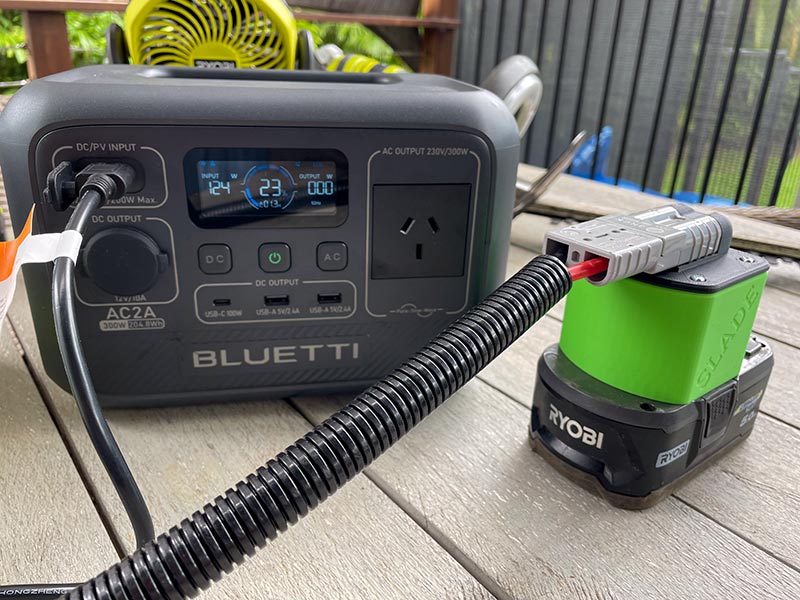
So he made me an adapter to convert the output of a Ryobi battery to a standard Anderson plug. I connected it to the DC input of a Bluetti AC2A solar generator and it worked, recharging at a rate of 124W!
I will admit this is not the most efficient way to recharge a solar generator, but if you desperately need to run a 240V device and your solar generator is running low on power and you have no other options, this could get you out of trouble, at least for a short time.
ECOFLOW ALTERNATOR CHARGER
I’ve saved the best until last. EcoFlow has just released its proprietary car alternator charging solution for its Delta Series of solar generators. Unlike the DC-DC converter we looked at earlier, this comes with all the wiring, fuses and connectors ready to install into your vehicle. All you do is connect the input wires to your car’s battery, run the cable to where you store your EcoFlow power station, mount the Alternator Charger, connect the output to your EcoFlow unit and you’re done.
The Alternator Charger is compatible with the EcoFlow smart device app where you can control all aspects of its operation, including varying the charge rate. This can be very useful if you have a smaller car with a low-output alternator.
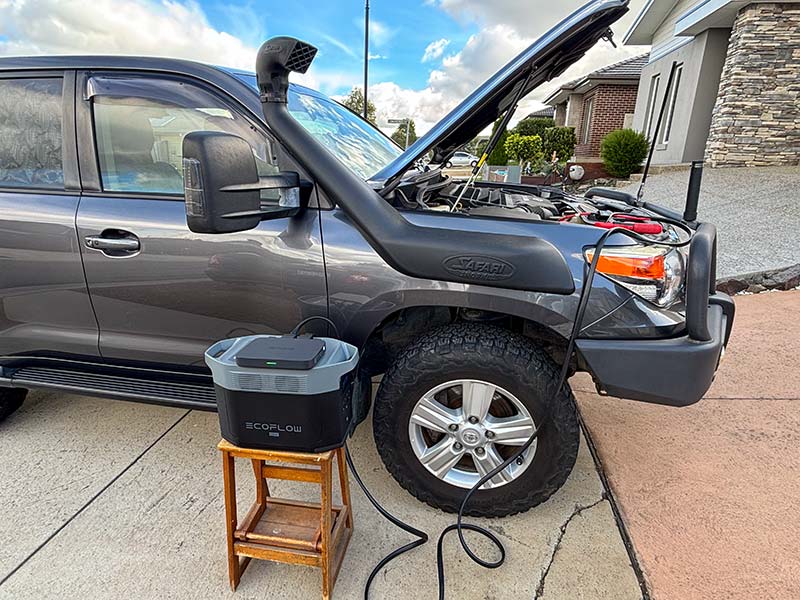
That’s not the end of the story. The EcoFlow Alternator Charger can work in reverse, providing charging to your car’s main battery at either a full 800W or in a low maintenance mode.
Here’s the best part: the Alternator Charger uses EcoFlow’s additional battery connection so you can still plug in a solar panel and increase the charge rate. Combined with a 200W solar panel, you can charge your EcoFlow Delta Series power station at up to 1000W! This is a game-changer, providing rapid recharging for EcoFlow’s high-capacity power stations.
A word of warning. At the full 800W, the EcoFlow Alternator Charger will draw 65-70A from your car’s electrical system. That’s quite a lot, even for a full-size 4WD like a Land Cruiser or a Patrol. In our initial tests with our 200 Series Land Cruiser, at idle, it had no trouble producing the full 800W, but when I turned on all our headlights, high beams and LED light bar, we saw the Alternator Charger’s output drop to 700W. It returned to normal with a slight increase in revs. If you’re concerned about the high load on your alternator, use the app to reduce the charge rate.
At this stage, EcoFlow is the only solar generator manufacturer with this technology available, but you can bet your last dollar other companies will follow suit in the not-too-distant future.
A COUPLE OF WARNINGS
Before trying any of these charging methods, you are advised to consult your solar generator’s user manual to ensure they are safe for your particular unit.
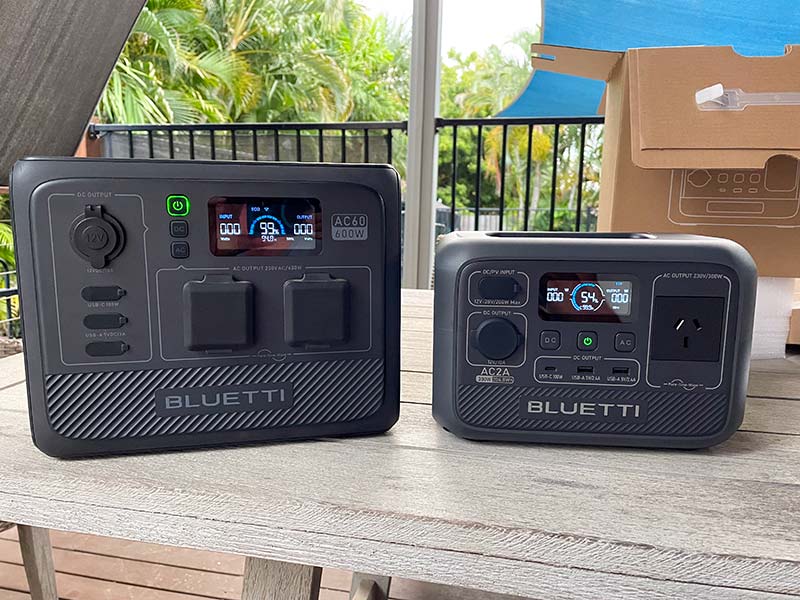
A note about charging from inverters and petrol generators: many solar generators have a ‘pass through’ feature when charging from a 240V source. This means that for any 240V appliance connected to it while it’s connected to a 240V source, the load will bypass the solar generator to the 240V source.
If the appliance has a 1500W load and you have the solar generator connected to an 800W petrol generator or inverter, it will cause an overload to the power source. Most petrol generators and inverters have overload protection; however, if that trips, the solar generator will take over, immediately relieving the cause of the overload.
This may lead to the overload protection of the source disengaging, restarting charging to the solar generator and immediately sending the power source into overload again. This cycle happens very rapidly and can cause damage to the 240V source or the solar generator. We strongly recommend you avoid running 240V appliances from your solar generator when you’re recharging from a petrol generator or an inverter.
The post No Sun? Recharge Your Solar Generator Anyway! appeared first on GoRV.
Source: https://www.gorv.com.au/no-sun-recharge-solar-generator-anyway/

